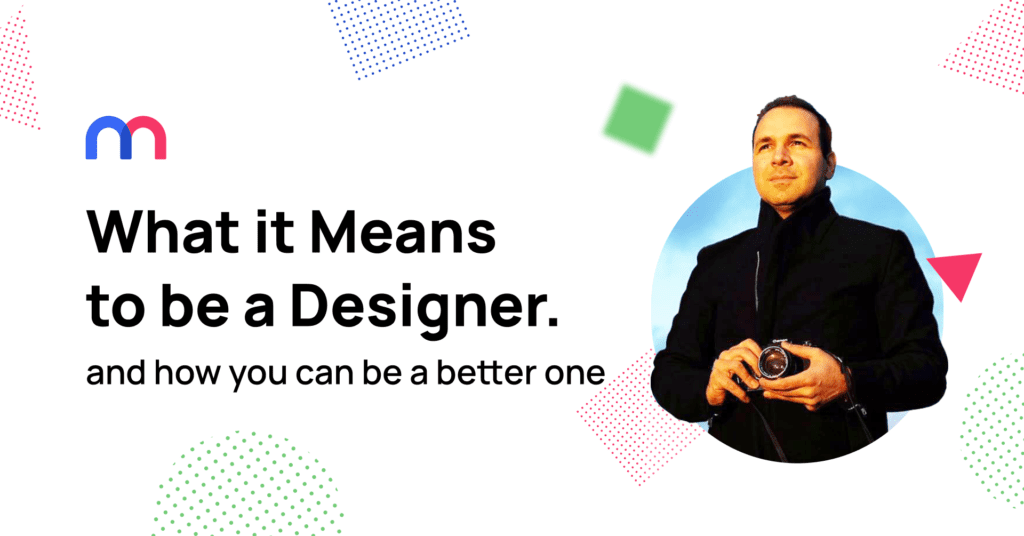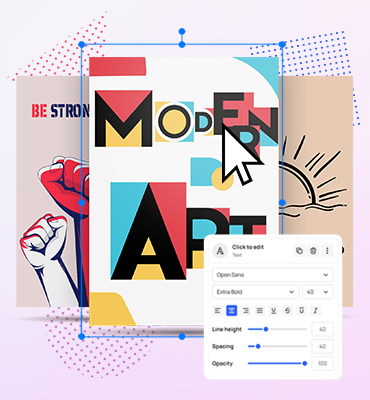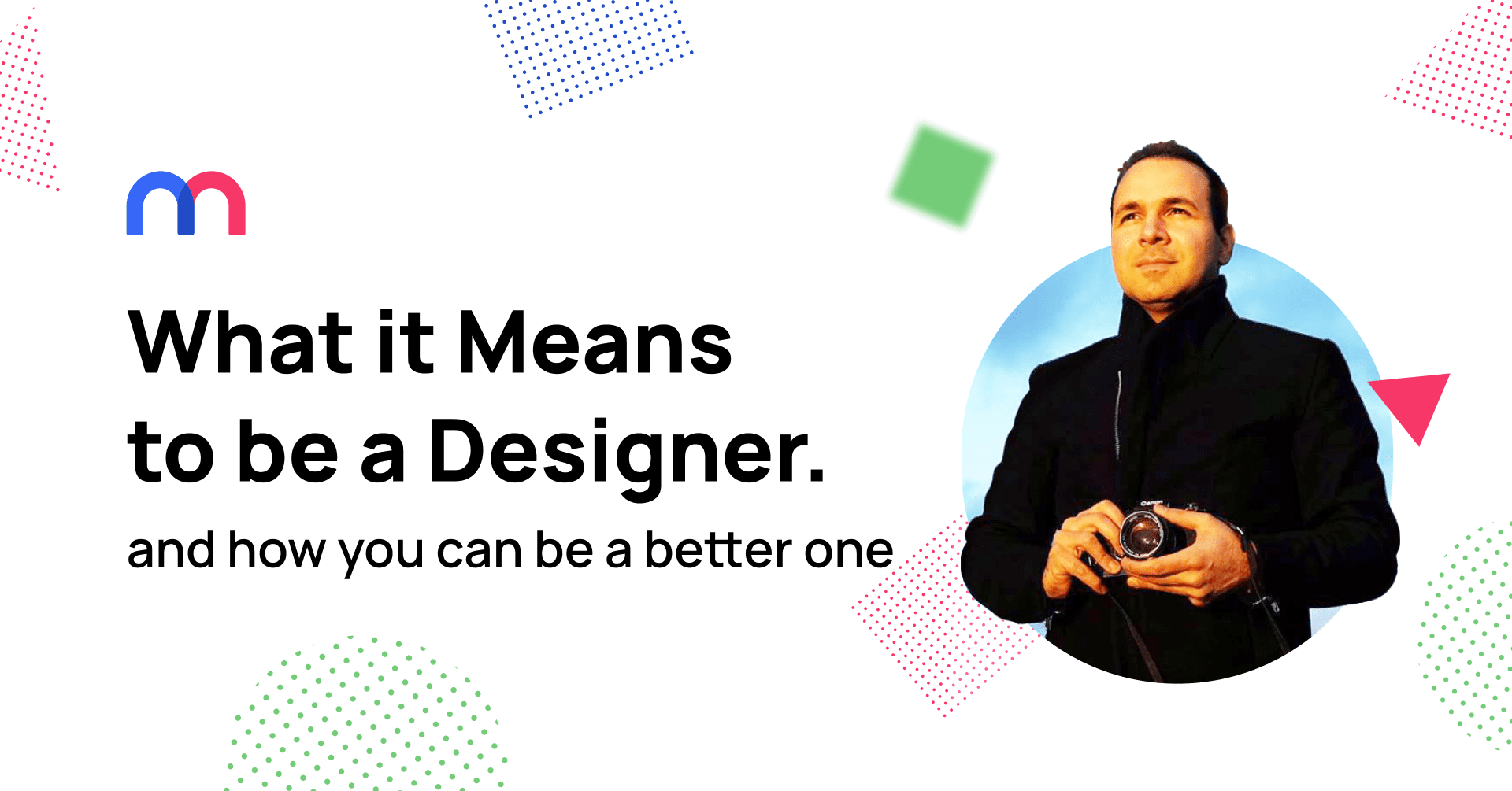What Does It Mean to Be a Designer? Tips from an ex-Google Designer

Product and Interaction Designer Amid Moradganjeh shares his take on designing
What does it mean to be a designer? In fact, we’re all designers. When we think about and create ways to solve our problems, or those of others, we’re in designer mode. That means as business owners, creatives, or service providers, we’re constantly designing because we’re taking actions to make our audience—our clients—have positive experiences or interactions with our work.
That’s the approach Amid Moradganjeh, ex-Google and IDEO product and interaction designer, takes when explaining principles of design to others. We spoke with Amid about this approach and got some suggestions for how anyone can become a better designer.
On becoming a “designer”
Amid Moradganjeh came to his design focus by way of mechanical engineering and industrial design. In the tech transformation of the 2000s, Amid saw the value of creating digital interactions that weren’t just “pain free”, but also impactful and enjoyable. This meant focusing on the person at the other end of a product or tool.
While studying in Umeå Institute of Design in Sweden, Amid began to shape his vision of “design”—not a set of rules and principles learned from a book, but rather a mindset centered on curiosity, experimentation, and learning. Rather than following one school of thought about design, he looked around and considered why something was done a specific way, whose approaches he could learn from, and how he can use his own experiences and ideas to do things differently. In this way Amid paved his own career. With this approach, Amid believes that “good design” becomes more achievable, irrelevant of whether it’s of a physical item, a graphic, or even a scent composition.
“Design should be open to different people with different backgrounds.”
Amid is so impassioned by the idea of democratizing design that he helped create a master’s program around it. He co-founded Velvet Academy—a successful series of courses—aimed directly at teaching these principles to “non-designers”. He’s even written a book that, of course, guides readers through actually designing something, not just reading about how to do it.
But… how do you do it?
Designer’s mindset for better design
Here are some of the main ideas Amid wants every “non-designer” to apply—no matter what they’re designing.
Stay optimistic!
Really! That’s the first hurdle to overcome.
Why? Because design is a process and getting better at it is too. If we go in worrying about the things we could get wrong, we don’t see the opportunities and alternatives in creating the solutions. So whether you’re tackling your tenth attempt at making a better check out process for your retail business or creating your first poster to promote your business—go in with the attitude that whatever comes out will be a success.
Redefine success
How can everything be a success?
By being a learning process. Amid’s approach reminds us that we’re going in to figure things out, not to get it perfect. And if you’re figuring it out that means even mishaps are successes—because they teach something. You’ll either learn why something didn’t work, or see a way to do it better. At the very least, you’ll know not to replicate that process or idea that exact same way next time. If you choose to measure your success by your progress then failure becomes irrelevant, a fear you don’t need to carry. Without fears you can design with confidence and confidence is the breeding ground of new ideas.
Try it out and stay curious
Great! You have a ton of new ideas, or at least one. Test it. Did it work?
No?
Great! Now iterate. Figure out why. Change what you think didn’t work. Or maybe it’s that other thing. Keep asking yourself questions about what could be improved. Better yet—ask your clients, audience, whomever for their feedback.
Use your resources
Part of that “open to all” design approach is that you have a wealth of knowledge and ideas around you. Whether it’s something you read to help your business or a collaboration with another professional, you’re able to incorporate unique perspectives and approaches in anything you do.
“Everyone around me has something to offer, so if I learn from them I’m fine.”
For example, your first product launch will be different from every consecutive one even if you design them yourself, but with input from your customers and others around you it’s bound to be more successful.
You’re already doing it
Remember, you’re already a designer—with your business, your career, your personal life-hacks. So, don’t be intimidated by what you think a designer is. Instead get inspired to improve the designer you already are. By following Amid’s approach your skills and ideas will get more robust and refined, no matter if your goal is to become a top professional or simply better at promoting your work or business.
Luckily, whether you’re into graphic design, web design, or industrial design, there are plenty of job opportunities out there to put your skills into practice.
“Tools should not stop people from being designers.”
As you apply Amid Moradganjeh’s principles, you may choose to utilize new tools, possibly Mediamodifier’s design or mock-up tools.
Ultimately, remind yourself that the tools you’re using don’t make you a designer, they’re just helping in your process. Some will be simple, others more complex, but they alone don’t make you better; instead they’ll give you one more way to iterate your ideas.
On his journey to becoming a professional designer, Amid’s personal mantra was “You have great ideas. You can create.” We think that’s one all of us can use. Now get out there, embrace your curiosity, and design something amazing.
Frequently Asked Questions
What does Amid Moradganjeh mean by “we’re all designers”?
Amid believes that design is not just for professionals—it’s an everyday activity. Whenever we solve a problem, shape an experience, or communicate something effectively, we’re engaging in design. The key is adopting a mindset that sees each action as a design choice.
Why is optimism important in design?
Optimism fuels experimentation. Amid argues that fear of making mistakes can stifle creativity. By approaching design as a learning process rather than chasing perfection, you open yourself up to innovation and meaningful discovery.
How should success be redefined in design practice?
Rather than judging success by final outcomes, Amid suggests measuring progress: every iteration, insight, or even failure teaches something valuable. In this view, feedback loops and learning are the true indicators of achievement.
What is Amid’s advice on testing and iteration?
Amid encourages trying out ideas quickly and gathering feedback. If something doesn’t work, treat it as informative. Ask why it failed, adjust assumptions, and iterate. Meanwhile, ask others—clients or users—for perception and reactions.
How can one leverage external resources to boost design skills?
He emphasizes that design doesn’t happen in isolation. Books, peers, tools, and even courses (such as those offered through Velvet Academy) can broaden your perspective and provide fresh input—helping refine your own process.
Do tools make someone a designer?
No—tools alone don’t define you as a designer. Amid stresses that tools should serve your creative mindset, not substitute for it. Whether you’re using mockup software or graphic editors, it’s your approach that truly shapes design.
So, what does it mean to be a designer?
To be a designer, according to Amid, means having the courage and curiosity to shape experiences intentionally. It’s about being present, noticing opportunities for improvement, and confidently acting—even if imperfectly. True design is driven by the desire to solve problems and make things better, not by titles or tools. Anyone who embraces that mindset is already a designer in action.
Related articles
Visualize your design Use a product mockup to showcase your design


Create your design Use our templates to create delightful designs for any medium


